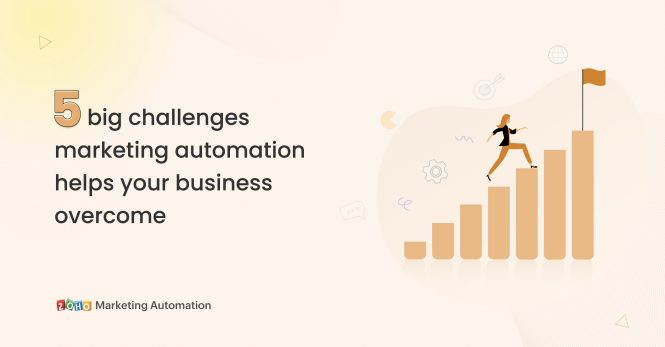

Marketing automation challenges are a common hurdle for businesses aiming to streamline their marketing efforts. While automation offers incredible potential, navigating the complexities and pitfalls can be daunting. This comprehensive guide delves into how to overcome the common challenges of marketing automation and leverage it for measurable business success. We’ll explore key strategies to effectively implement and optimize marketing automation, highlighting practical solutions and actionable steps. This article is structured as follows: understanding the common obstacles, selecting the right tools, setting realistic expectations, and continuously adapting your strategy.
Understanding the Common Obstacles
Marketing automation, while powerful, is not a silver bullet. Implementing and optimizing an automation strategy requires understanding the potential challenges that can arise. Often, these challenges stem from a lack of clear goals, poor integration with existing systems, and difficulty in measuring results. Understanding these hurdles is the first step toward mitigating risks and maximizing returns.
Defining Clear Goals and KPIs
A critical aspect of overcoming automation challenges is setting clear goals and establishing measurable key performance indicators (KPIs). Without a defined objective, it’s difficult to gauge the effectiveness of the automation system and track progress. For example, if the goal is to increase lead generation, the KPIs should be tailored to this objective, such as conversion rates, lead qualification rates, and cost per lead. This data-driven approach helps assess and improve the marketing automation strategy over time. Consider how your current marketing data and tools can contribute to measuring success with automation.
Selecting the Right Tools and Technologies
Choosing the right marketing automation tools and integrating them effectively is crucial. Different tools cater to different needs and budgets. A well-chosen platform simplifies workflow management, personalizes interactions with customers, and increases campaign efficiency. Factors to consider include budget, features, scalability, and integration with existing systems. In addition to your core marketing automation software, carefully evaluate and integrate with tools like CRM and email marketing platforms. This careful selection and integration is paramount to avoid wasted effort and time.
Setting Realistic Expectations
It’s essential to acknowledge that marketing automation isn’t a quick fix. It requires time, effort, and continuous optimization. A reasonable timeline should be established, and benchmarks for progress should be outlined from the beginning. Avoid unrealistic expectations; instead, focus on gradual improvements in key areas like lead generation and customer engagement. Continuously monitoring your strategy and adapting to changing circumstances is paramount to achieve success. A successful marketing automation plan is an iterative process that includes regular feedback from stakeholders and analytics.
Continuously Adapting Your Strategy
Tracking and Analyzing Data
Regularly monitoring campaign performance is vital. Analyzing data allows for continuous improvements based on actual results. A/B testing different campaign elements, such as email subject lines or landing page designs, can optimize conversion rates. Tracking key metrics, like click-through rates and conversion rates, can provide valuable insights and improve effectiveness.
Integrating with Existing Systems
Integrating the marketing automation system with existing CRM, email marketing, and social media platforms is essential for a cohesive workflow. This integration ensures data consistency and avoids data silos, creating a unified view of customer interactions.
Addressing Scalability Concerns
As your business grows, your marketing automation system should adapt to changing needs and accommodate increased traffic. Prioritize scalability features in your chosen platform so that your future marketing campaigns can be implemented without disruption, leading to increased ROI.
Prioritizing User Experience
Creating personalized experiences for your customers and prospects is critical for improving engagement rates and conversion rates. A well-structured marketing campaign leads to greater customer satisfaction and brand loyalty.
Conclusion
By carefully examining the challenges of marketing automation, understanding your needs, and planning for continuous optimization, you can successfully leverage automation tools to drive significant growth for your business. Marketing automation is an ongoing process, not a one-time solution; it requires meticulous planning and continuous adaptation to succeed. Remember to always track and analyze your campaigns’ effectiveness, tailor them to your audience, and prioritize user experience. By focusing on these aspects, you can avoid typical pitfalls and ensure your marketing automation systems consistently deliver positive results.
In conclusion, overcoming marketing automation challenges requires a strategic approach that combines meticulous planning, continuous optimization, and a willingness to adapt. By understanding the nuances of your target audience, setting realistic goals, and prioritizing user experience, you can unlock the full potential of marketing automation and drive significant business growth. Ready to embark on a journey of automation success? Dive into our resources and take the first step towards a streamlined and highly effective marketing strategy.